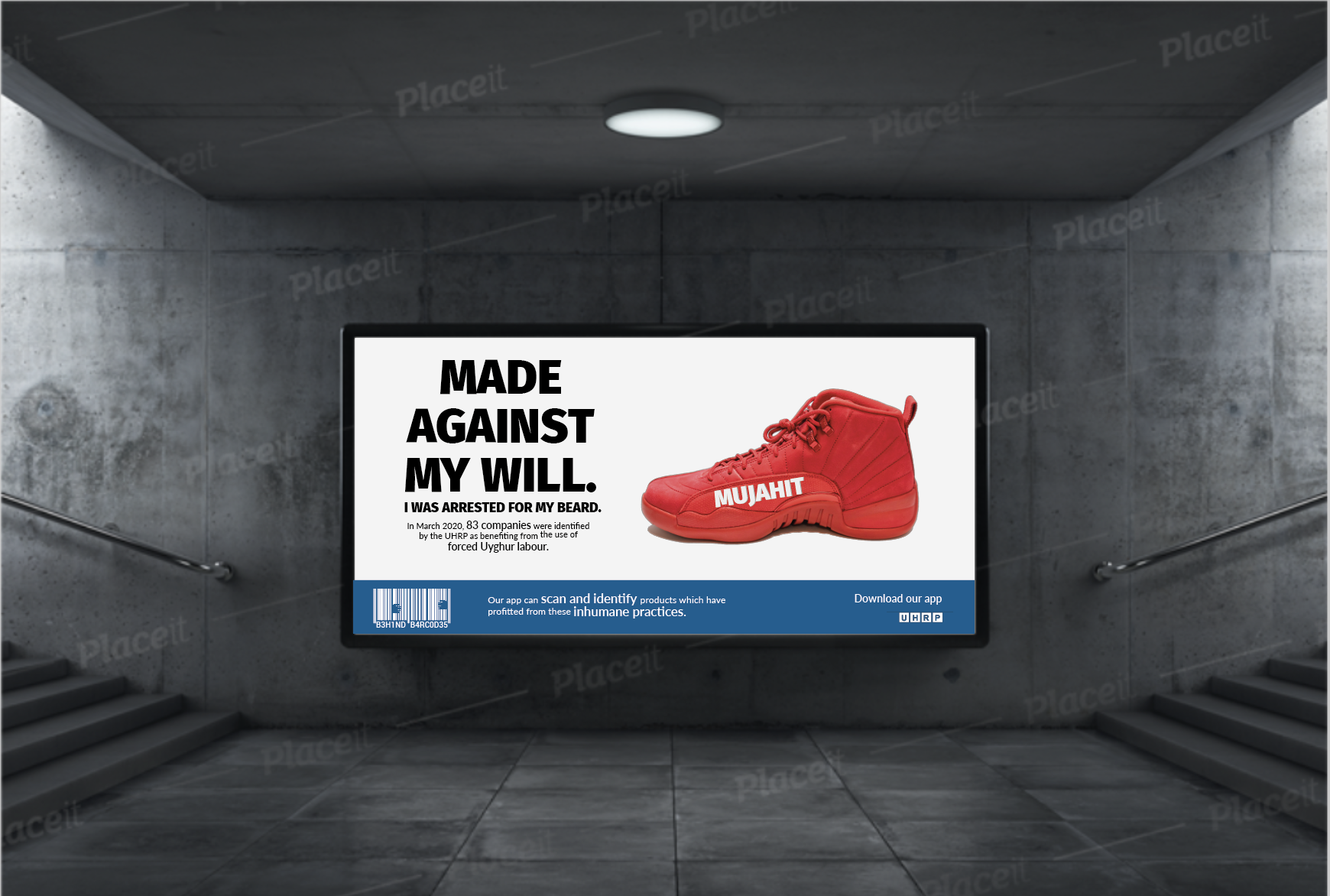Anna Harding
Designs
Behind Barcodes
Behind Barcodes is a campaign I created for my Design for Change module, focusing on the Uyghur Muslim crisis in China. Starting in 2017, Uyghurs in the Xinjiang region have been under attack. The Chinese government
claims that mass incarceration is necessary to prevent terrorism and root out Islamic extremism. They also claim
that 90% of people in their camps have now ‘graduated’, however most of those ‘released’ end up being moved to prisons or forced labour factories. Since 2017, over 80,000 Uyghurs have been transferred out of Xinjiang and assigned to factories – this is now part of the ‘re-education’ process: ‘vocational training’. An investigation by UHRP found 83 major companies profiting from such abuse, which is what my campaign is focusing on exposing.
A big inspiration for my campaign was Greenpeace, who went against Nestle and their use of palm oil in their products in 2010. Their campaign included a parody advert video of KitKats, replacing the chocolate bar with orangutan fingers. Whilst the campaign didn’t immediately make much impact as Nestle quickly banned its broadcasting, this then caused public interest to skyrocket as people were excited to see something that was attempted to be hidden from them.
The first set of posters are parody adverts, calls out big brands by stratigically using their iconic branding, so that the audience subconsiously knows exactly which company is being called out, without the posters even needing to say it. They also include personal messages from those affected replacing the usual text, so it angers and also sympathises the audience to the cause.
The second set of posters are inspired by typical clothing brand advertisements, with an image of the model surrounding by corresponding prices to the items they are wearing. My spin on this is that instead of pricing, there are the names of the people who made the clothes – a subtle change which will cause the audience to double take, and hopefully be more likely to remember the message. Unlike the first design, this format is used by most clothing companies, and therefore, cannot be claimed as breaking copyrights held by one brand.
A big inspiration for my campaign was Greenpeace, who went against Nestle and their use of palm oil in their products in 2010. Their campaign included a parody advert video of KitKats, replacing the chocolate bar with orangutan fingers. Whilst the campaign didn’t immediately make much impact as Nestle quickly banned its broadcasting, this then caused public interest to skyrocket as people were excited to see something that was attempted to be hidden from them.
The first set of posters are parody adverts, calls out big brands by stratigically using their iconic branding, so that the audience subconsiously knows exactly which company is being called out, without the posters even needing to say it. They also include personal messages from those affected replacing the usual text, so it angers and also sympathises the audience to the cause.
The second set of posters are inspired by typical clothing brand advertisements, with an image of the model surrounding by corresponding prices to the items they are wearing. My spin on this is that instead of pricing, there are the names of the people who made the clothes – a subtle change which will cause the audience to double take, and hopefully be more likely to remember the message. Unlike the first design, this format is used by most clothing companies, and therefore, cannot be claimed as breaking copyrights held by one brand.










